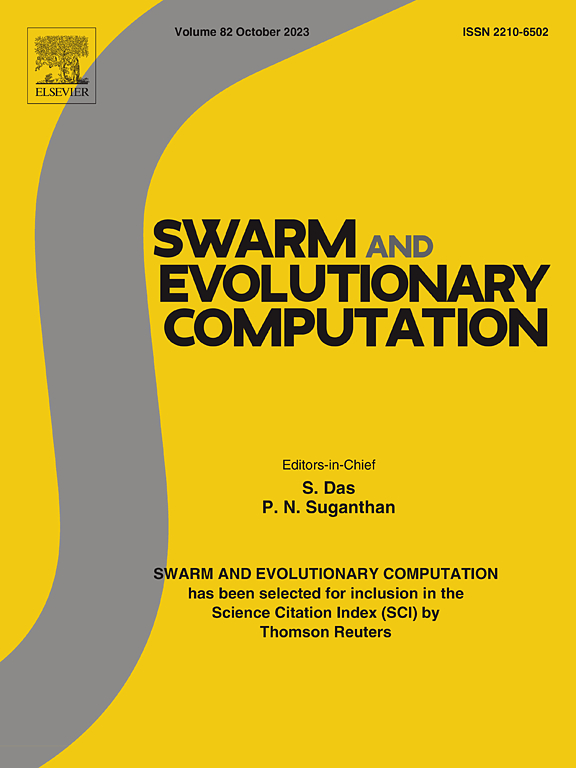MOHFDQ:基于模糊双轨排队模型的医院患者挂号优化元启发式方法
IF 8.5
1区 计算机科学
Q1 COMPUTER SCIENCE, ARTIFICIAL INTELLIGENCE
引用次数: 0
摘要
排队管理应用于航空、银行、医疗保健和电信等部门。然而,很少有基于排队模型的方法来管理患者等待时间,特别是在医疗保健系统中。当患者最初无法在抵达时获得护理时,他们往往会再次尝试获得服务。如果挂号台很忙,到达的病人可以选择加入普通候诊区或行政候诊区。在本研究中,我们考虑了两种类型的患者:付费获得额外服务的高级/急诊患者和不支付额外服务的普通/非急诊患者。但是,如果普通患者对服务不满意,挂号台可能会提供额外的支持。为了解决这个问题,MOHFDQ框架开发了一个将排队理论、模糊理论和随机优化相结合的三阶段方法。在第一阶段,分析MOHFDQ模型,建立患者队列长度、等待时间和吞吐量等关键性能指标。在第二阶段,将清晰模型扩展为双轨系统的模糊模型,并利用α-cut和参数非线性规划(PNLP)技术推导出各种模糊度量。最后,在第三阶段,为了提高生产率和保证高服务质量(QoS),实现了一种元启发式遗传算法(GA)和确定性黄金分割搜索(GSS)方法,以最小化系统总成本来确定最优服务参数。本文章由计算机程序翻译,如有差异,请以英文原文为准。
MOHFDQ: A metaheuristic approach to optimizing hospital patient registration with a fuzzy double-orbit queueing model
Queueing management is applied across sectors such as airlines, banking, healthcare, and telecommunications. However, there are very few queueing model-based approaches to managing patient waiting times, particularly in healthcare systems. Patients often reattempt to access services when they are initially unable to receive care upon arrival. If the registration desk is busy, an arriving patient may choose to join either the regulaor execuwaiting area. In this study, we consider two types of patients: premium/emergency patients who receive additional services based on payment and ordinary/non-emergency patients, who do not pay extra. However, if an ordinary patient becomes dissatisfied with the service, the registration desk may provide additional support. To address this, the MOHFDQ framework a three-phase approach integrating queueing theory, fuzzy theory, and stochastic optimization developed. In the first phase, the MOHFDQ model is analyzed and key performance metrics such as patient queue length, waiting time, and throughput are established. In the second phase, the crisp model is extended to a fuzzy model for a double orbit system, and α-cut and parametric nonlinear programming (PNLP) techniques are used to derive various fuzzified metrics. Finally, in the third phase, to enhance productivity and ensure high quality of service (QoS), a metaheuristic genetic algorithm (GA) and a deterministic golden section search (GSS) method are implemented to determine the optimal service parameters by minimizing the total system cost.
求助全文
通过发布文献求助,成功后即可免费获取论文全文。
去求助
来源期刊

Swarm and Evolutionary Computation
COMPUTER SCIENCE, ARTIFICIAL INTELLIGENCEC-COMPUTER SCIENCE, THEORY & METHODS
CiteScore
16.00
自引率
12.00%
发文量
169
期刊介绍:
Swarm and Evolutionary Computation is a pioneering peer-reviewed journal focused on the latest research and advancements in nature-inspired intelligent computation using swarm and evolutionary algorithms. It covers theoretical, experimental, and practical aspects of these paradigms and their hybrids, promoting interdisciplinary research. The journal prioritizes the publication of high-quality, original articles that push the boundaries of evolutionary computation and swarm intelligence. Additionally, it welcomes survey papers on current topics and novel applications. Topics of interest include but are not limited to: Genetic Algorithms, and Genetic Programming, Evolution Strategies, and Evolutionary Programming, Differential Evolution, Artificial Immune Systems, Particle Swarms, Ant Colony, Bacterial Foraging, Artificial Bees, Fireflies Algorithm, Harmony Search, Artificial Life, Digital Organisms, Estimation of Distribution Algorithms, Stochastic Diffusion Search, Quantum Computing, Nano Computing, Membrane Computing, Human-centric Computing, Hybridization of Algorithms, Memetic Computing, Autonomic Computing, Self-organizing systems, Combinatorial, Discrete, Binary, Constrained, Multi-objective, Multi-modal, Dynamic, and Large-scale Optimization.
 求助内容:
求助内容: 应助结果提醒方式:
应助结果提醒方式:


